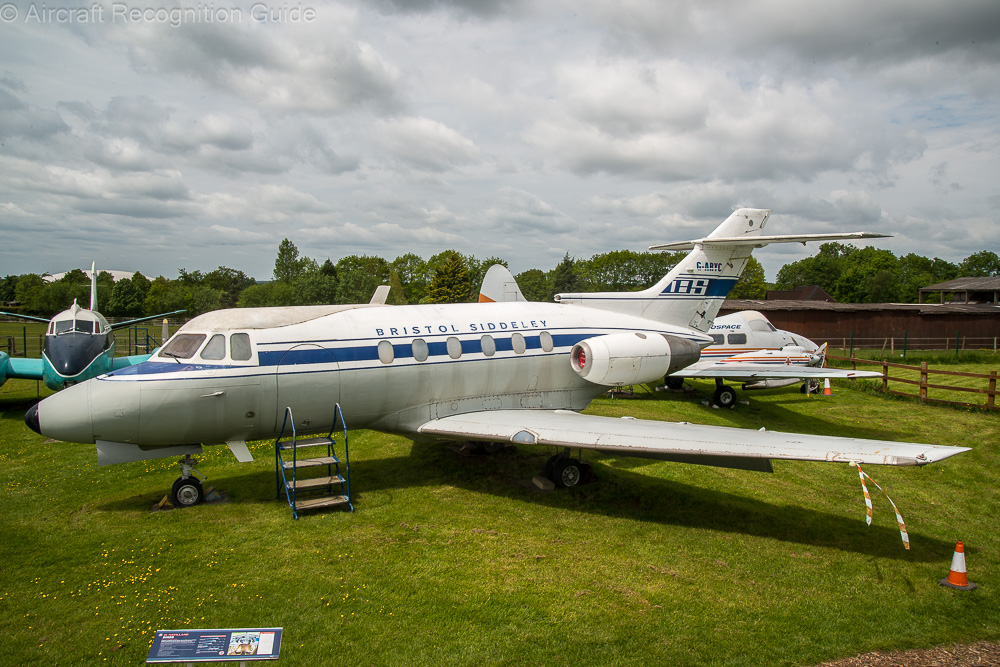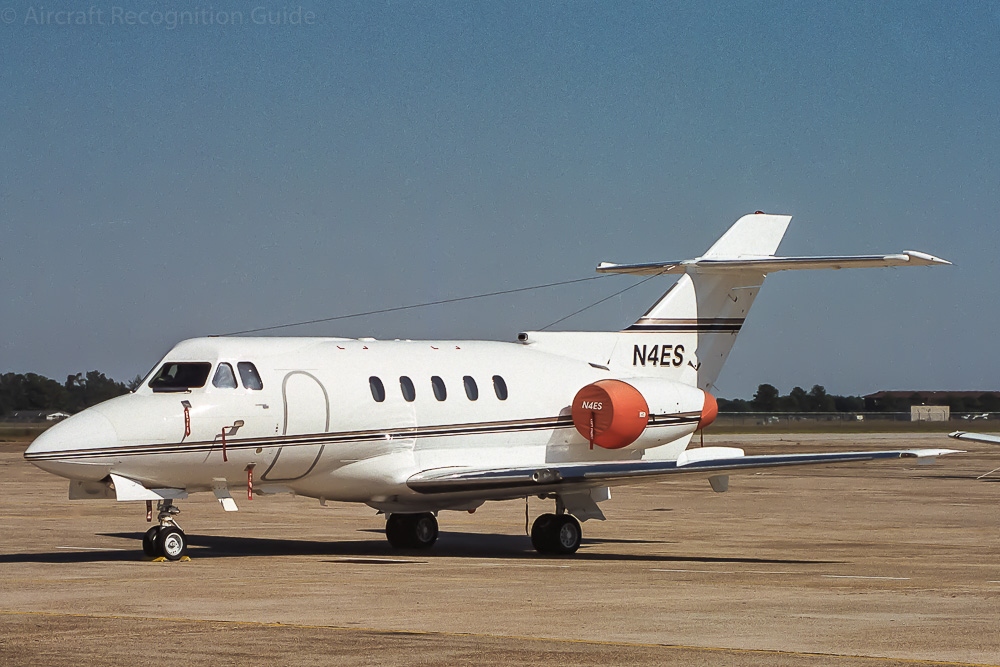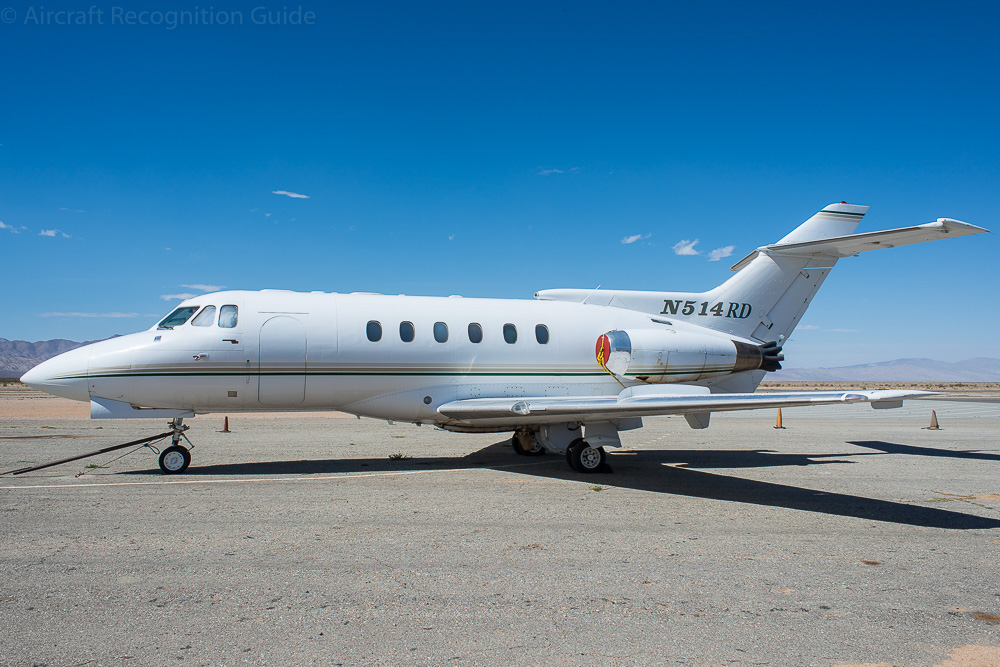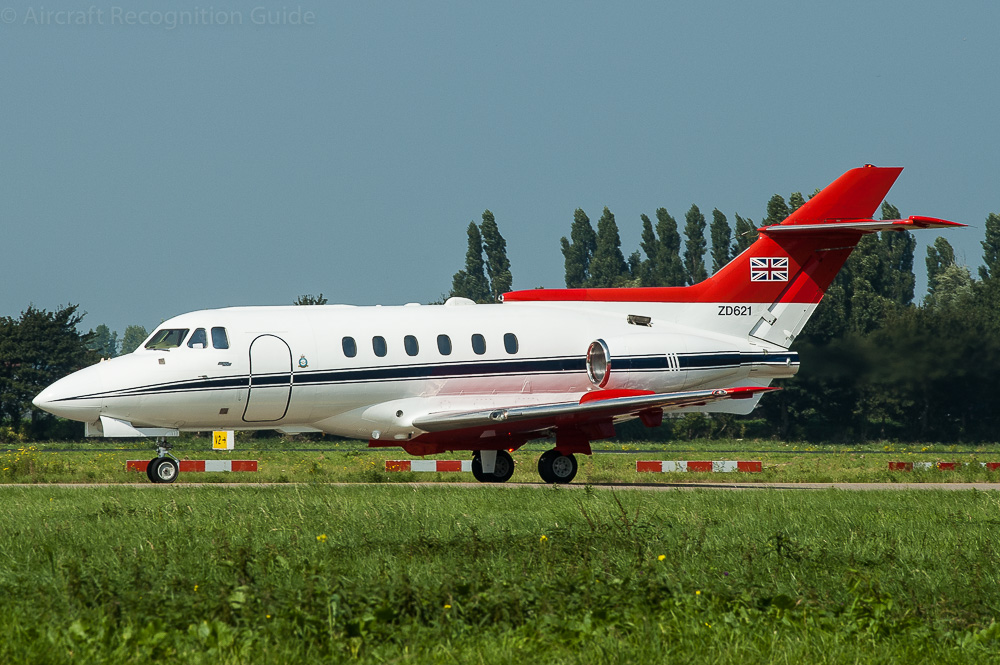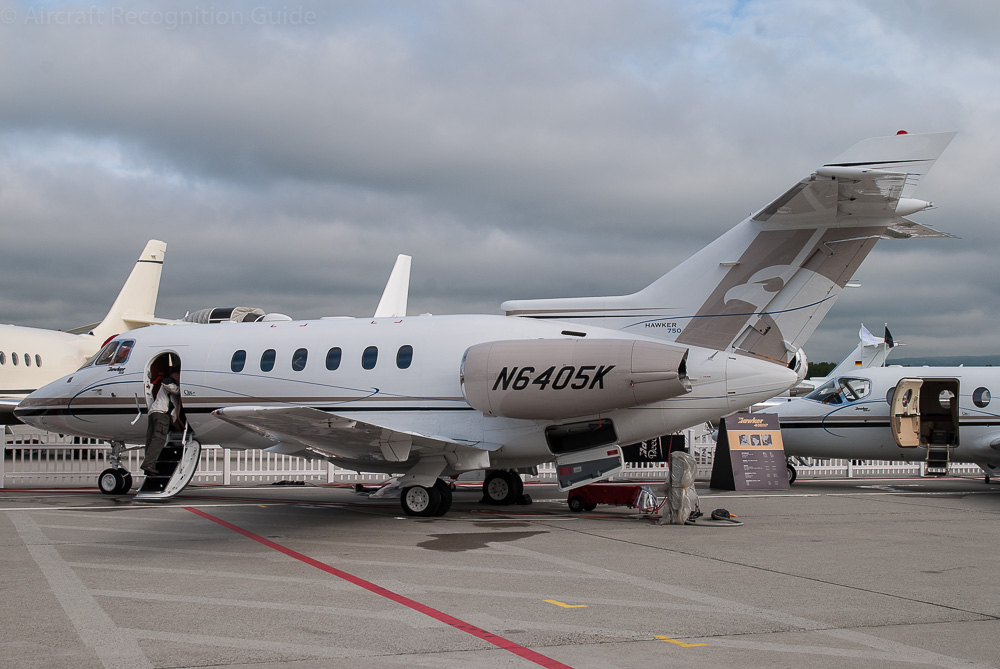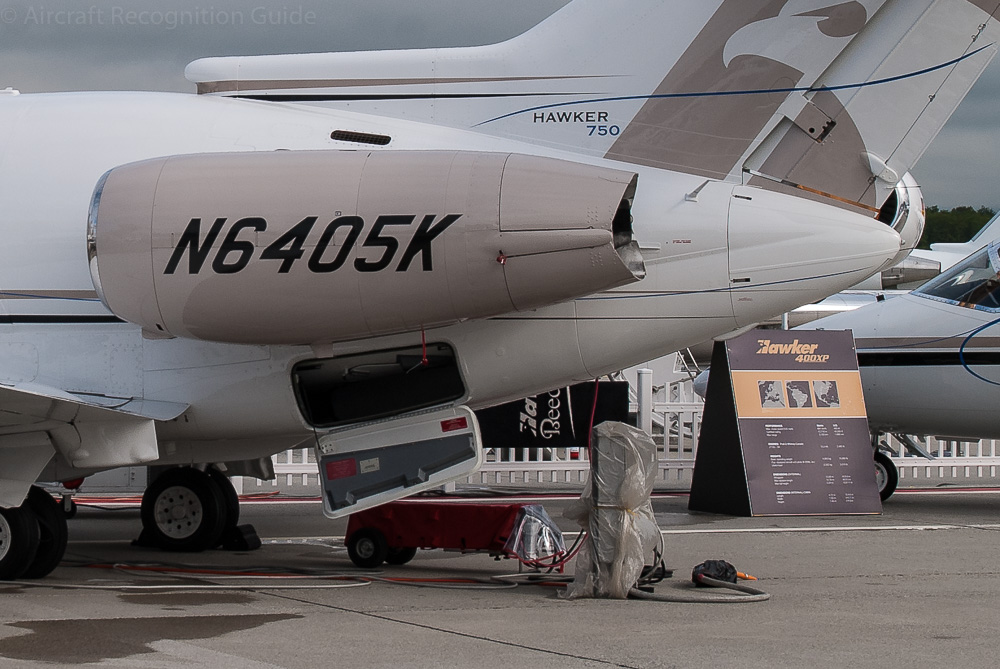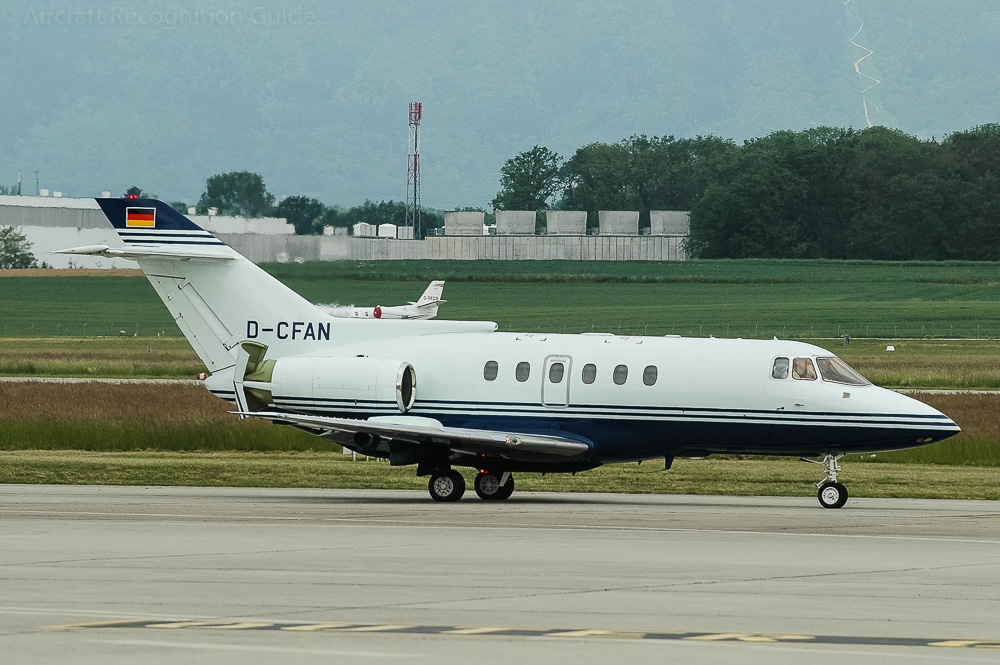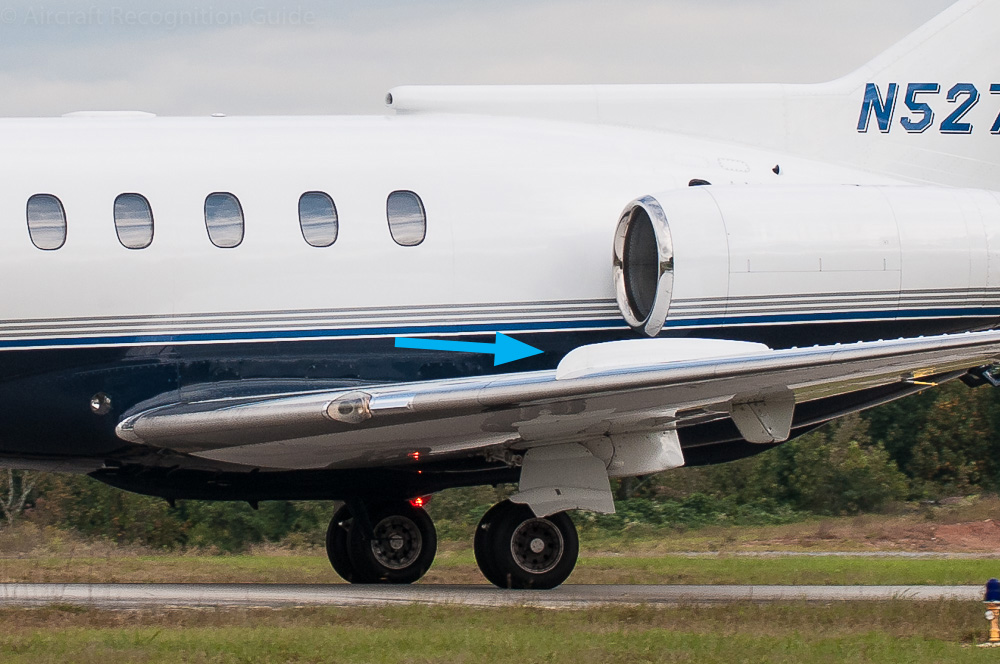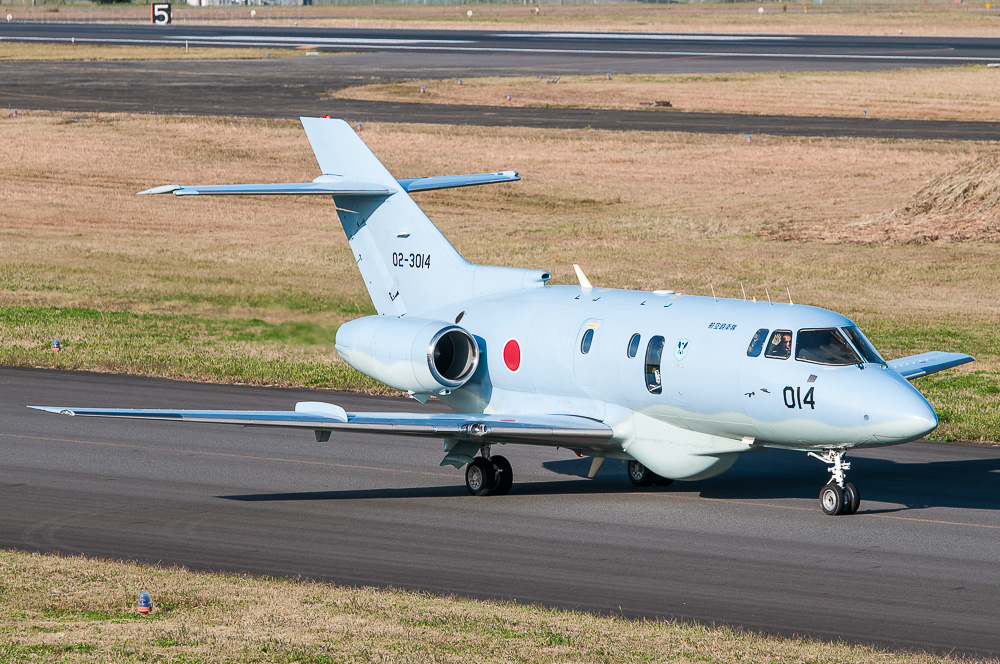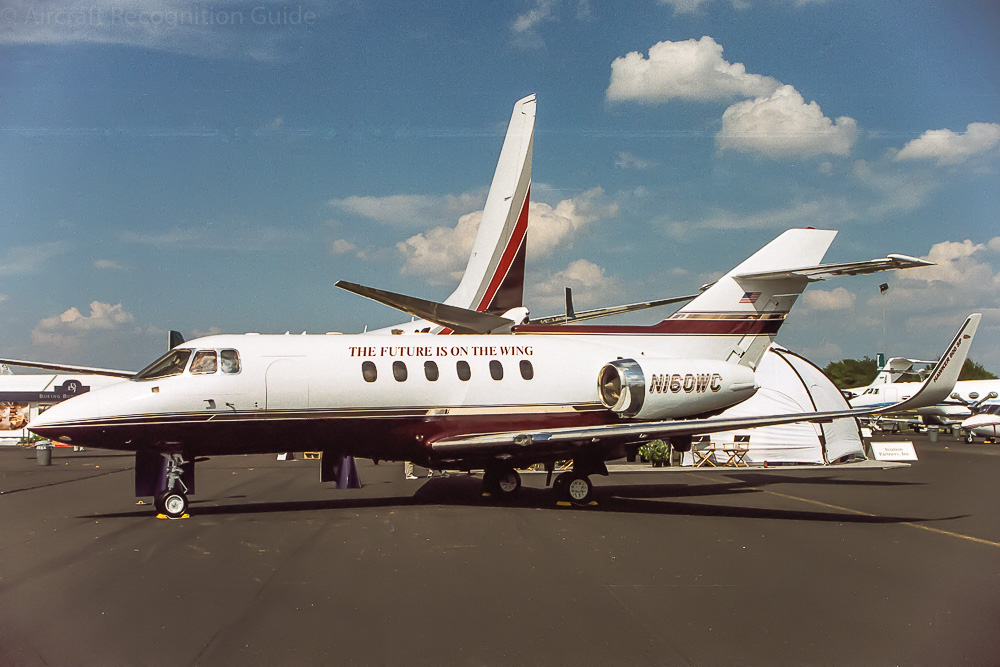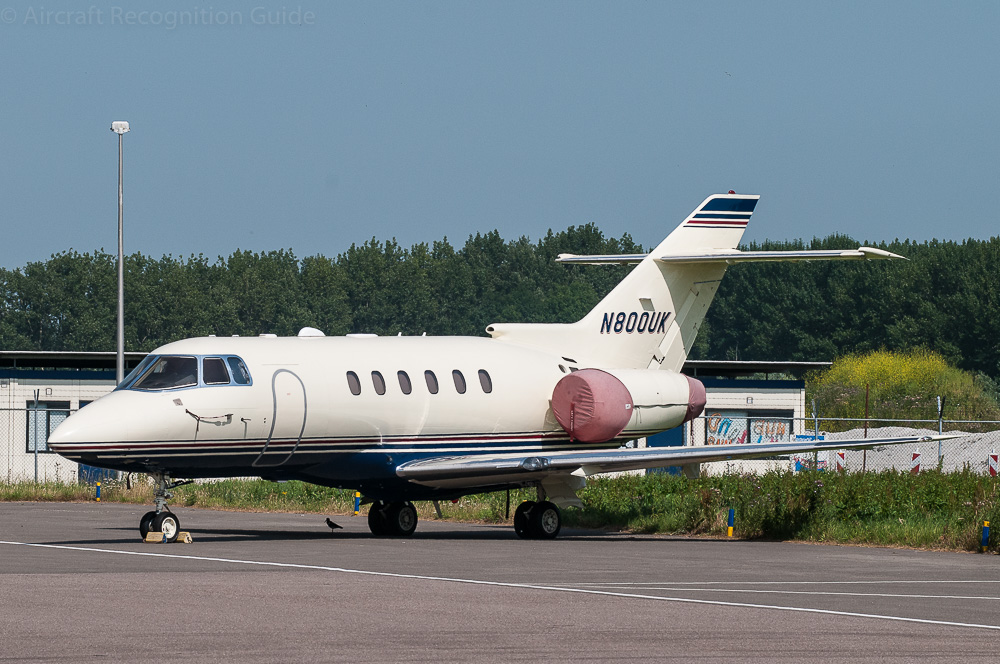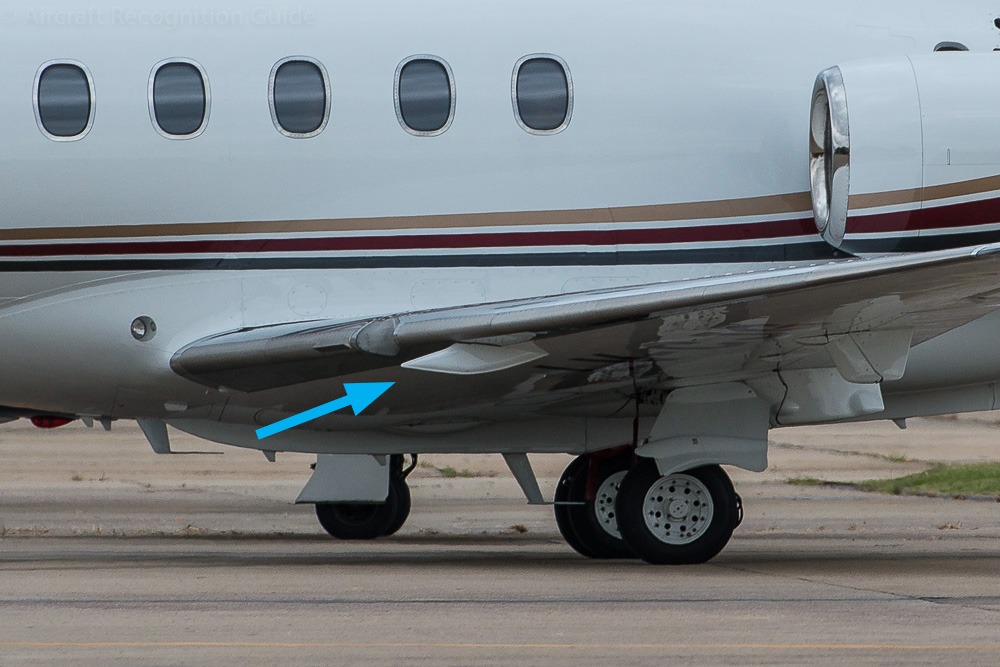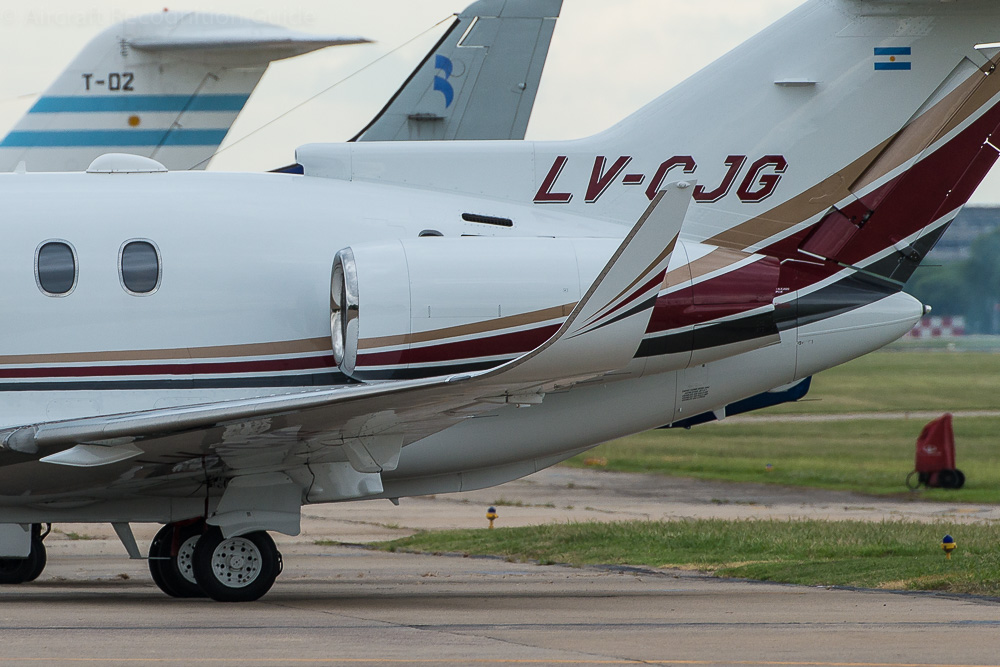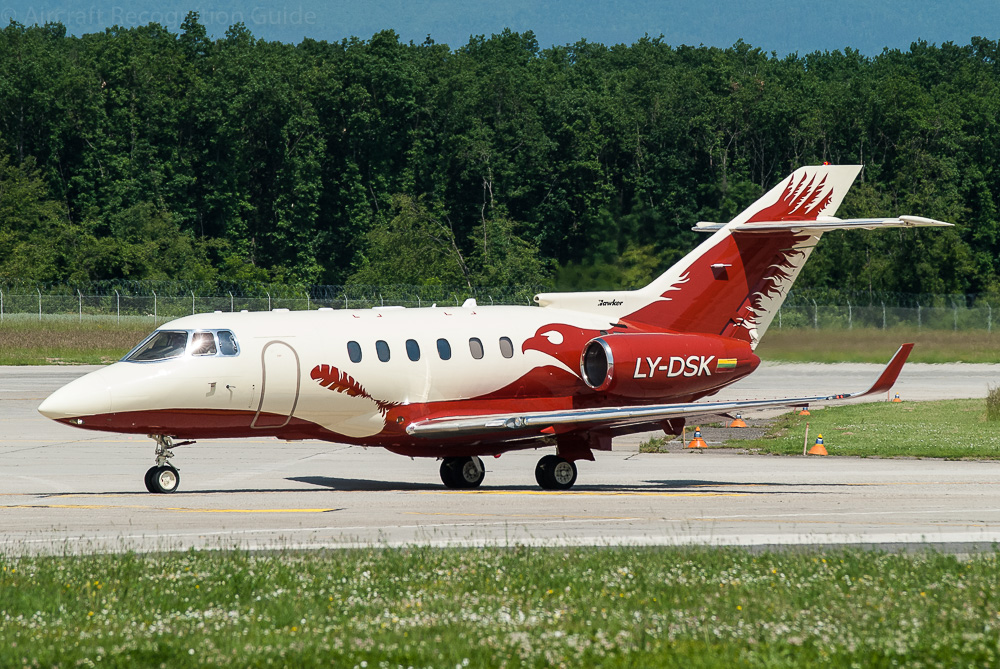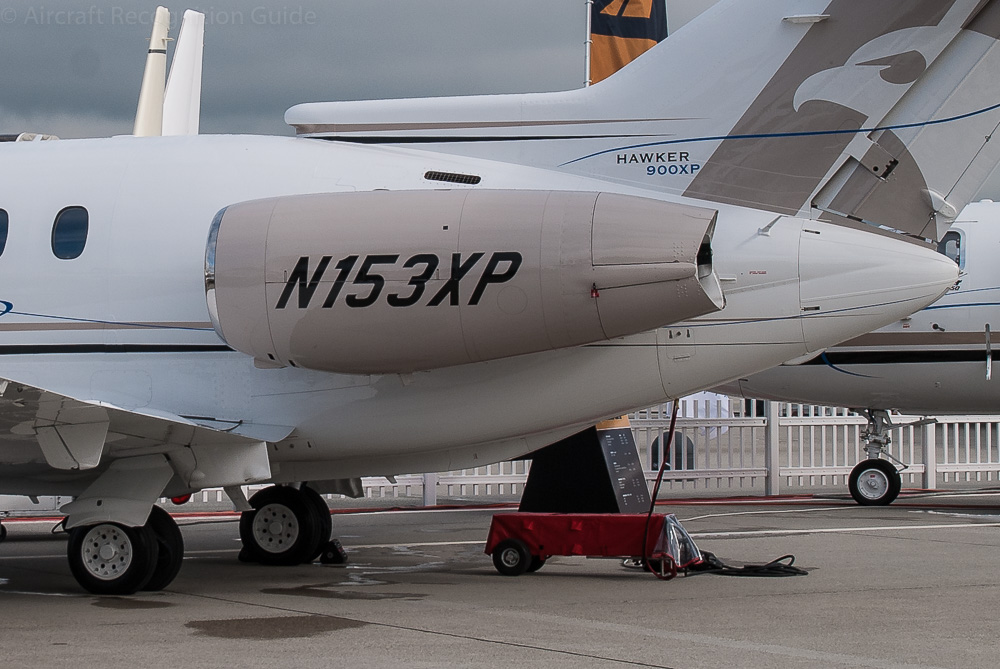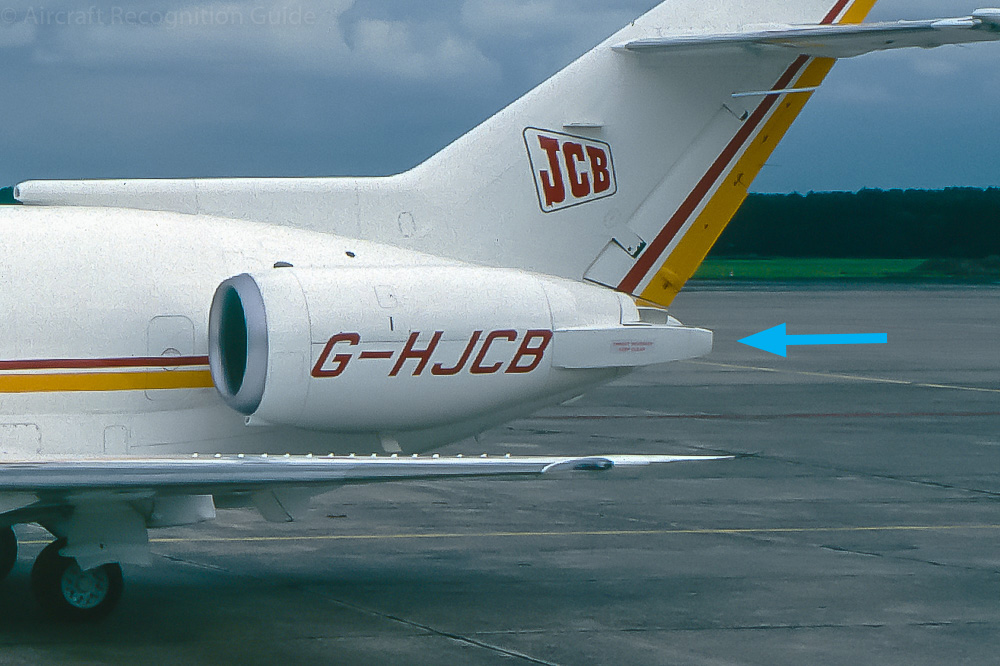
Hawker-Siddeley/British Aerospace 125 series
Below you find a description of various versions of the aircraft that was originally designed as the DeHavilland DH125. Even before the first aircraft was delivered, DeHavilland was acquired by Hawker Siddeley. The aircraft was then referred to as HS125. However the bizjet was still initially delivered on the US market as the DH125. By the way, you can recognise the American versions by the A behind the series designation. The B versions were intended for the rest of the world. In 1969, Hawker-Siddeley partnered with Beech Aircraft Corp. Hence the marketing name for the American aircraft became BH125. However, this lasted only briefly.
Hawker-Siddeley merged into British Aerospace in 1977, which itself also had its consequences for the type designation. Another name change took place when Raytheon Aircraft acquired the BAe125 and moved the production line to the USA. Raytheon marketed the aircraft as Hawker 800/800XP/1000. This stayed this way when the Hawker line was taken over by Hawker Beechcraft and later Textron Aviation.
All versions of the Hawker bizjet are characterised by the tail, with the horizontal stabiliser mounted high on the vertical stabiliser, but not like a T-tail, and the dorsal fin with an air intake in the root. Furthermore, the aircraft has low mounted swept wings underneath the fuselage and rounded rectangular cabin windows. All gears have double wheels.
All members of the DeHavilland/Hawker-Siddeley/British Aerospace 125 family have a characteristic cruciform tail and narrow dorsal fin with small air intake at the root.
Different versions
To differentiate between the different subtypes you have to look at
- the length of the fuselage
- the number of cabin windows
- the shape of the engine nacelles
- the presence of ventral fins
- the presence of wing fences
- the shape of the cockpit windows
- the presence and shape of winglets
- the shape of the main entry door
- the length of the dorsal fin
DH125/HS125 Series 1
The DH125/HS125 Series 1 was the first version, powered Viper 20 or 520 engines. Nine were built, including two prototypes. This sub version has six cabin windows, while the Series 1A/B through 400A/B have only five. Later versions, from Series 600 on, also have six cabin windows, but on the Series 1 the last cabin window is close(r) the engine nacelle. Last but not least the Series 1 has no ventral fin.
Typical for all early models is the cockpit section that seems to pop out of the fuselage a bit. This results in a curved seem between fuselage and cockpit. The Series 1 has six flat cockpit windows.
DH125/HS125 Series 1A & 1B
DH125/HS125 Series 1A-522 & 1B-522
DH125/HS125 Series 1A/R-522 & 1B/R-522
DH125/HS125 Series 1A/S-522 & 1B/S-522
DH125/HS125 Series 3A & 3B
DH125/HS125 Series 3A/R & 3B/R
DH125/HS125 Series 3A/RA & 3B/RA
HS125 Series 3A, 3B/RB & 3B/RC
All these subtypes are very similar and cannot be distinguished externally to our knowledge. The differences are in the engines (Viper 521s or Viper 522s), weights, performance and (extra) fuel tanks.
This is what they have in common:
- small diameter Rolls Royce Viper engines
- a wide entrance door that slides up in the fuselage when opened
- foldable stairs
- five windows on each side
- no ventral fin underneath the rear fuselage (although later versions seem to have it)
- a sort off “antenna rack” on top of the fuselage, abeam the last three windows
The Brazilian air force operated the Series 3A/RA as C-93/EC-93/VC-93 (see also Series 400).
HS125 Series 2 (Dominie T1)
The HS125 Series 2 was a version developed as training aircraft for the Royal Air Force, that called it Dominie T1. This sub version is largely equal to Series 1, including the six cabin windows (although some may be covered), but with a dorsal fin like on the Series 400. Later versions, from Series 600 on, also have six cabin windows, but on the Dominie the last cabin window is close(r) the engine nacelle.
This Dominie T1 has a short fuselage but six cabin windows.
BH125 Series 400A & DH125 Series 400A
HS125 Series 400A, 400B, 401B & 403B
These versions of the 125 also have Rolls Royce Viper engines with small diameter nacelles. Still they can be recognised from the other Viper versions by:
- a smaller, less wide entrance cabin door that hinges down when opened
- stairs integrated in the cabin door
- a ventral fin underneath the rear fuselage
- no “antenna rack” on top of the fuselage
HS125 Series 400A. Note the narrower door and ventral fin.
HS125 Series F3B & F3B/RC
HS125 Series 731
HS125 Series F400B & F403B
The F in the designation points to the TFE731 engines instead of the Viper engines. These subtypes are the same as above (and thus also have the same external appearance) but have larger diameter TFE731 turbofan engines instead of the Vipers. The marketing name HS125 Series 731 applies to the TFE731 version of all A subtypes with five windows. It is indistinguishable from the F3B and F400B.
The Royal Air Force has used several Series 400 aircraft for liaison, designated HS125 CC1. The Brazilian air force operates the Series 403B as C-93/EC-93/VC-93 (see also Series 3A/RA).
HS125 Series 600A & 600B (BH125 Series 600A)
You can best recognise the 600 Series by noticing the Viper engines, a longer dorsal fin (extending until the last cabin window) and six windows on each side. The distance between the last cabin window and the engine nacelle is larger than on the Series 1 and Dominie T1. Furthermore, the fuselage behind the cockpit is somewhat more streamlined at the roof. It retains the six flat cockpit windows though.
The Royal Air Force has operated this version as the HS125 CC2.
HS125 Series F600A & F600B
The F600A and F600B differ from the versions without F by the TFE731 engines instead of the slimmer Viper engines. This makes the version externally equal to the Series 700A/700B.
After conversion with new engines the Royal Air Force called the modified aircraft HS125 CC2A.
HS125 Series 700A & 700B
This is essentially a newly built, re-engined HS125-600A and -600B. They differ from the 600 Series by the TFE731 engines, which have a larger diameter than the Viper engines of the 600. This makes the version externally equal to the Series F600A/F600B, which are aircraft originally built as 600A/B.
The Royal Air Force has also operated this version, designated HS125 CC3.
Hawker Beechcraft Hawker 750
The Hawker 750 is offered as a less expensive alternative of the Hawker line next to the 900XP. Externally it is the same as the Hawker 800XP and Hawker 800XPi: it has no winglets. Note however that the Hawker 750 has an externally accessible baggage compartment between the wing and the engines. In the Hawker 800XP(i) a fuel tank is installed here, so no door is visible.
British Aerospace 125 Series 800A & 800B, Raytheon Hawker 800
Fortunately British Aerospace made the Series 800 more easy to recognise from earlier versions, because the curved cockpit windows are a clear characteristic. Furthermore, the dorsal fin under the rear fuselage has disappeared and the nose gear doors close again after the landing gear has been lowered.
Hawker 800 was the new marketing name of the BAe125 Series 800A/B after acquisition by Raytheon. There are no further differences. It retains wing fences from earlier Series.
This version also has US military designation C-29A, being used for flight calibration. The same aircraft is designated U-125 in Japanese service. The JASDF also operates a search and rescue (SAR) version of the Hawker 800, named U-125A.
British Aerospace 125 Hawker 800SP
Aviation Partners, known for the winglets on amongst others the Gulfstream II and Boeing 737s, has also developed a winglet for the BAe125 Series 800A/B. They call their creation Hawker 800SP, where ‘SP’ stands for special performance. Note that they make winglets for the Hawker 800XP as well, but these aircraft are called Hawker 800XP2 (see below).
Hawker 800SP
Raytheon Hawker 800XP & XPi
The differences between the Hawker 800 and the Hawker 800XP are generally not too large, because the TFE731-5BR engines cannot be distinguished from the -5R engines and standard thrust reversers of the 800XP are optional on the 800. Instead you should pay attention to the wings: the wing fences are gone and they are replaced by vortex generators, that can also be found on the BAe125 Series 1000A/B. Additionally, the dorsal fin is shorter: it stops at the front of the engine nacelles instead of the last cabin window.
Hawker 800XPi is the marketing name for a Hawker 800XP with updated avionics.
The Brazilian Air Force flies with the Hawker 800XP as EU-93A, while the South Korean air force has special mission aircraft designated RC-800RA and RC-800SIG. Both have a canoe shaped bulge under the fuselage, multiple antennas and two ventral fins.
Raytheon Hawker 800XP2
Like the Hawker 800SP is a 125 Series 800A/B with Aviation Partners winglets, this is a Hawker 800XP with the same winglets. The winglets of the Hawker 850XP/900XP are a bit less tall than those of the 800XP.
Raytheon Hawker 800XPR, 850XP & 900XP
The Hawker 850XP is a Hawker 800XPi with factory installed winglets. These winglets can also be installed later, meaning that a 800XPi can be converted to a 850XP. The winglets are smaller than the Aviation Partners winglets, to allow it to be recognised from a Hawker 800XP2 (see above).
The follow-up of the Hawker 850XP, the Hawker 900XP, has different engines (TFE731-50Rs) and again updated avionics. This is not visible from the outside.
In the Series 800XPR both are merged, as it is a Hawker 800XP with the 900XP's engines, avionics and winglets. Hence it cannot be distinguished from the 850XP and 900XP.
British Aerospace 125 Series 1000A & 1000B, Raytheon Hawker 1000
The longest version is the Series 1000, which has seven windows on each side. Furthermore, the subtype has the curved cockpit windows of the Series 800 and also the fairings for the thrust reversers extending from the rear of the nacelles are an important indication.
Just like the Hawker 800 the BAe125 Series 1000A/B received a new marketing name after the acquisition by Raytheon, namely Hawker 1000.
Confusion possible with
Dassault Falcon 20
The Dassault Falcon 20 series is the most similar aircraft to the HS125 series, as it also has a cruciform tail, but horizontal stabiliser is mounted lower, about halfway. Also the cabin windows are oval, the cockpit windows are different, next to a lot more differences.
Embraer EMB550
Even though the Embraer EMB550 has a T-tail, the curved cockpit windows may make you confuse it with the Series 800 and later. The Embraer has only four of them though, and more cabin windows.


